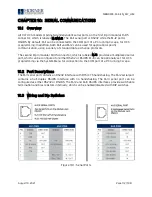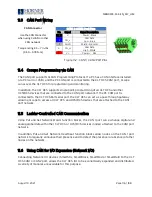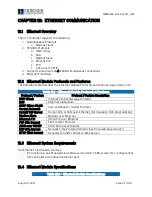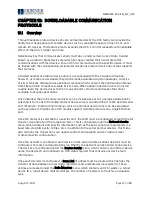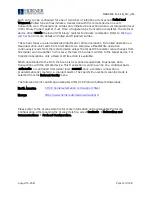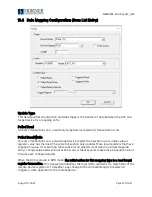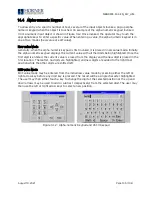
MAN0974-13.1-EN_XL7_UM
August 19, 2021
Page 123 | 198
CHAPTER 13: DOWNLOADABLE COMMUNICATION
PROTOCOLS
13.1 Overview
Through loadable protocol device drivers, certain models of the OCS family can provide the
ability to exchange data with remote devices such as variable-frequency drives, PLCs, and
remote I/O devices.
This feature greatly expands the OCS ’s control capability with negligible
effec
t on the OCS ’s ladder scan time.
Remote devices that communicate serially must do so under certain rules of data transfer
known as a protocol. Many device manufactures have created their own protocol for
communications with their device. For an OCS to communicate with a specific device, it must
be loaded with the corresponding serial communications protocol device driver that supports
that protocol.
A limited number of protocol device drivers are packaged with the Cscape distribution;
however, as more are developed, they will be made available as add-on packages. A device
driver is typically distributed as a Windows module, which contains the Configuration Menus,
Help Files and the Target Executable Driver Code. When updating device drivers, an install
routine loads the device driver to the Cscape directory structure and makes that driver
available to Cscape applications.
Once installed, the protocol device driver can be included as part of a Cscape application by
selecting it from a list of installed protocol device drivers and attaching it to the desired serial
port (Program > Protocol Config menu). Only one protocol device driver can be associated
with a serial port, though some OCS models support multiple protocols on a single Ethernet
port.
Once the protocol is selected for a specific port, that port must be configured to match the bit
transfer size and rate of the target device(s). This is configured under the Network Config
menu, which contains port specific information such as the basic serial port parameters (i.e.
baud rate, stop bits parity, retries, etc.). In addition to the serial port parameters, this menu
also contains the transaction scan update control configuration and any network level
protocol specific configuration.
Once the network is configured, each device on the serial communications network must be
configured. For some communications (i.e. RS232), the network can be limited to one device.
The devices are configured under the Device Config menu, which contains an arbitrary device
name, the device ID and optionally an OCS status register that contains any device fault
information.
Once each device(s) is configured, a Scan List of entries must be created which defines the
transfer of data between a local (OCS) register(s) and a remote device register(s). These
entries are created under the Data Mapping menu, which contains an OCS register, a target
device ID, a target device register address, the number of registers to transfer, and update
type.




